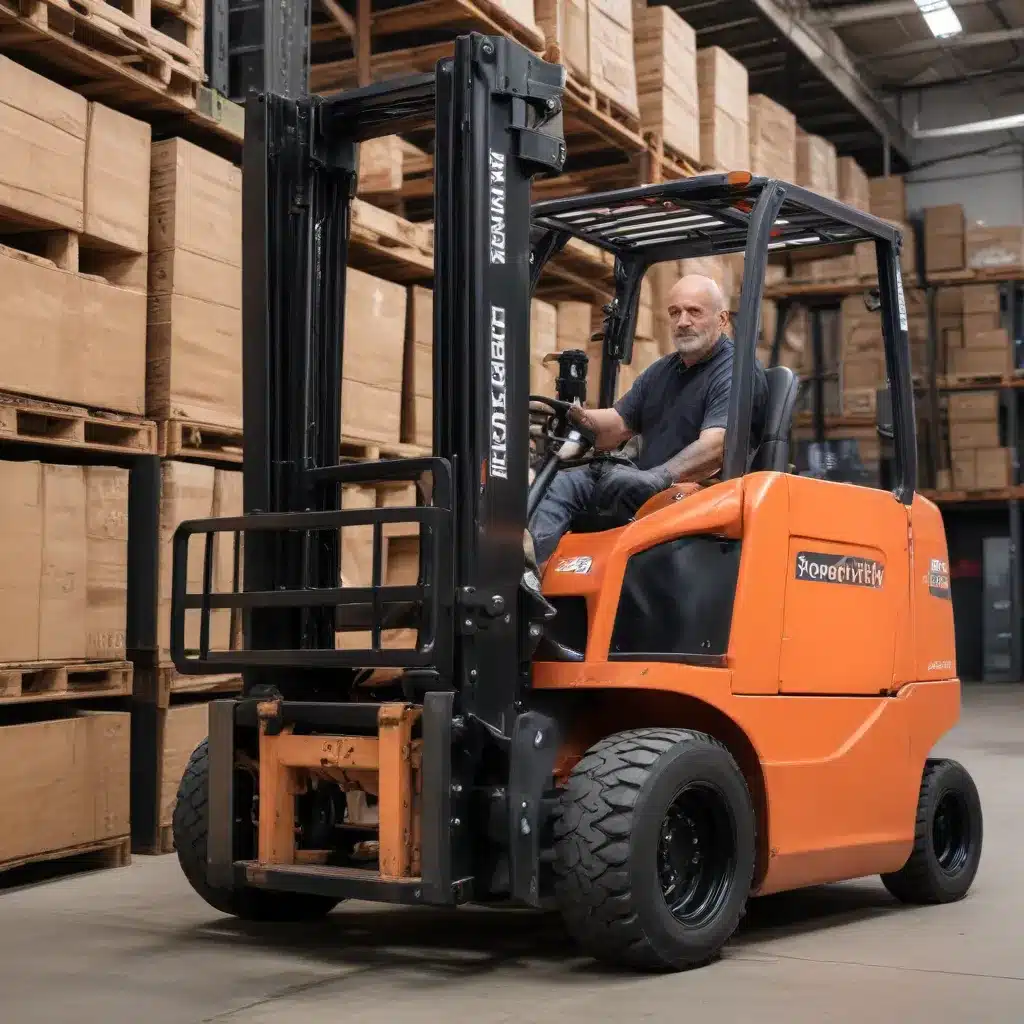
As a seasoned industry expert in forklifts, warehousing, and logistics, I’m well-versed in providing practical tips and in-depth insights on forklift reviews, safety guidelines, maintenance, and industry trends. In this comprehensive article, we’ll dive deep into the world of forklift maintenance and explore the key considerations for retrofitting older models to extend their lifespan and improve their performance.
The Importance of Proper Forklift Maintenance
Maintaining a forklift fleet is a critical aspect of any successful warehousing or logistics operation. Proper maintenance not only ensures the safety and reliability of your equipment but also helps to maximize its lifespan and minimize downtime. By adhering to recommended maintenance schedules and best practices, you can keep your forklifts running smoothly, reduce the risk of costly breakdowns, and ultimately improve the efficiency and productivity of your overall operations.
Preventive Maintenance: The Key to Forklift Longevity
One of the most important aspects of forklift maintenance is a well-structured preventive maintenance program. This proactive approach involves regularly scheduled inspections, servicing, and replacement of key components to identify and address potential issues before they become major problems. By staying ahead of potential failures, you can extend the useful life of your forklifts, reduce the frequency and severity of repairs, and maintain a high level of performance and safety.
Forklift Safety: Prioritizing Operator and Workplace Security
Alongside maintaining the mechanical integrity of your forklifts, it’s crucial to prioritize the safety of your operators and the surrounding work environment. Proper training, adherence to safety protocols, and regular inspections of critical safety features (such as brakes, hydraulics, and visibility) are essential to prevent accidents and protect your workforce.
Retrofitting Older Forklift Models: Considerations and Benefits
As forklifts age, the decision to retrofit or replace them can be a complex one, balancing factors such as cost, efficiency, and environmental impact. Retrofitting older models can be a viable option, allowing you to extend the life of your equipment and potentially realize significant cost savings.
Evaluating the Feasibility of Retrofitting
When considering retrofitting an older forklift, it’s essential to carefully evaluate the current condition of the machine, the availability of compatible retrofit parts, and the potential for improved performance and efficiency. This assessment should include a thorough inspection of the forklift’s major systems, an analysis of its operational history, and a comparison of the anticipated benefits against the investment required.
Upgrading Key Components
One of the primary advantages of retrofitting is the ability to upgrade key components, such as engines, transmissions, and control systems, to improve the forklift’s performance and environmental impact. For example, converting an older diesel-powered forklift to run on cleaner-burning fuels like compressed natural gas (CNG) or liquefied petroleum gas (LPG) can significantly reduce emissions and align the equipment with evolving environmental regulations.
Enhancing Safety and Operator Ergonomics
In addition to mechanical upgrades, retrofitting can also address safety and operator ergonomics. Incorporating advanced safety features like cameras, object detection systems, and improved visibility can help prevent accidents and protect both operators and nearby workers. Enhancements to the operator’s seat, controls, and overall cabin design can also improve comfort and reduce the risk of musculoskeletal injuries.
Balancing Cost and Environmental Impact
The decision to retrofit older forklift models should also consider the financial and environmental implications. While retrofitting can be a cost-effective alternative to purchasing new equipment, the upfront investment must be weighed against the potential long-term savings in maintenance, fuel, and emissions reduction. Additionally, by extending the lifespan of existing forklifts, you can reduce the environmental impact of manufacturing and disposing of new machines, contributing to a more sustainable material lifecycle.
Industry Trends and Innovations in Forklift Maintenance
The forklift industry is constantly evolving, with new technologies and best practices emerging to address the changing needs of warehousing, logistics, and material handling operations. Understanding these trends and innovations can help you stay ahead of the curve and ensure your forklift fleet remains efficient, reliable, and compliant.
Embracing Telematics and Predictive Maintenance
One of the most significant advancements in forklift maintenance is the integration of telematics and predictive maintenance systems. These cutting-edge technologies utilize sensor data, machine learning, and advanced analytics to monitor forklift performance in real-time, identify potential issues before they occur, and recommend proactive maintenance actions. By anticipating and preventing breakdowns, you can minimize downtime, reduce maintenance costs, and ensure your forklifts are always ready for action.
Sustainability and Emissions Reduction
As environmental concerns continue to shape industry regulations and consumer expectations, the focus on sustainability and emissions reduction has become increasingly important in the forklift sector. Alongside retrofitting older models, many manufacturers are developing electric and hybrid-powered forklifts that eliminate or significantly reduce carbon emissions, aligning with TERP’s efforts to cut NOx emissions and promote cleaner transportation solutions.
The Rise of Automation and Autonomous Forklifts
Another emerging trend in the forklift industry is the integration of automation and autonomous technologies. Self-driving forklifts, equipped with advanced sensors, control systems, and AI-powered decision-making, are revolutionizing material handling operations by increasing efficiency, reducing the risk of human error, and optimizing workflow processes. As these technologies continue to evolve, they will undoubtedly play a crucial role in the future of forklift maintenance and fleet management.
Conclusion: Embracing Forklift Maintenance and Retrofit Strategies
Maintaining a well-functioning forklift fleet is essential for any organization that relies on material handling and logistics operations. By implementing robust preventive maintenance programs, prioritizing safety, and considering strategic retrofitting of older models, you can extend the lifespan of your equipment, improve performance, and contribute to a more sustainable and efficient work environment.
As the industry continues to evolve, staying informed about the latest trends and innovations in forklift maintenance will be crucial to staying ahead of the curve. Forklift Reviews is committed to providing you with the practical insights and expert guidance you need to make informed decisions about your forklift fleet and ensure your operations run smoothly, safely, and cost-effectively.

